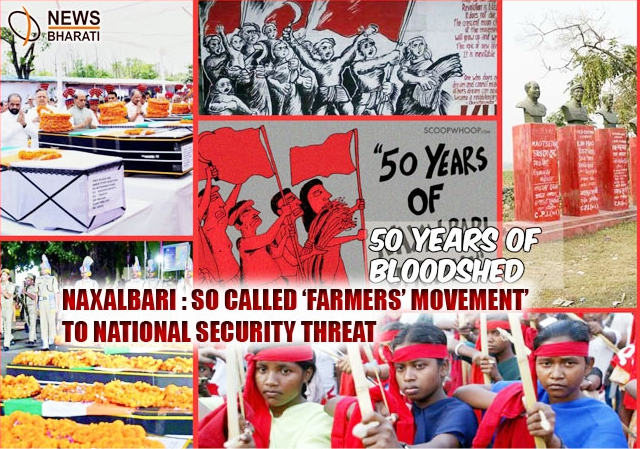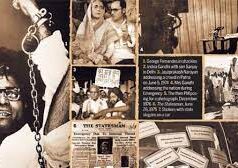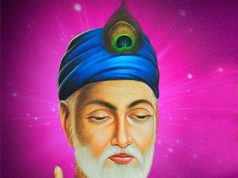
Naxalbari Movement- a classic example of how wrong, disoriented leadership can turn a so called farmer movement into a threat for a country’s internal security. A small village area from Darjeeling district from north Bengal, Naxalbari has given birth to this movement. The peasants uprising which was aimed to make free the poor villagers and tribals from the grip of Zamindars, now itself makes them deprived of basic health services, comforts and necessity of technological advancements, basic communication and banking facilities.
The movement has crossed half of a century but now the question arises -could they actually help the villagers?
A glimpse of global Communism:
The inequality in our society, injustice to the lower class stuck a German Philosopher, Karl Marx. The constant revolutions and the nature of change in civilisation, according to Marx lead to an ideal society. He believed that conflict between producer and owner of the production is bound to happen.
The constant conflicts would create a workers’ uprise to “seize the means of production” and creating a society where the property would be equally distributed. This is known as famous class conflict theory. In his book, “The Communist Manifesto” he explained the idea of the socialist state. The idea turned into active revolution under the leadership of Vladimir Lenin. At the age of 19, he already was familiar with the ideas of Karl Marx. He tried to understand the ideological concept of Marx in Scientific terms and instead of seeing “people” as a single entity, he tried to understand the difference in a mass. In 1917, he dethroned Tsar. The November revolution gave birth to first Marxist state in the World.
The idea of equal distribution failed, as it was deeply grounded in theory. The next communist state is China. Mao-Zedong led the ‘Great Leap Forward’ and the ‘Cultural Revolution’ in China. His aim to give power to everyone resulted in a massive decline in agricultural output, which, together with poor harvests, led to famine and the deaths of millions. The People’s Republic of China is the witness of pathetic rule where anyone could be hanged if they opposed to Marxism. The revolution of blood changed started the tradition of bloodshed.
History of Naxalbari Movement:
The undivided Communist Party of India (CPI) was already facing inner conflicts and struggles, during its early development of India. In 1964, the first split of CPI turned out giving birth of CPIM. The second split under the leadership of Charu Majumdar is the origin of Naxal movement or today’s Maoism. The main conflict among Indian Communists was – their path of revolution. A group wanted to reform in a constitutional way whereas another group never wanted to “surrender to rule”. This clash is the origin of CPI (M) and CPI (ML). “The main emphasis of the revolution in India will be to make a success of peasants’ revolt,” – Charu Majumder wrote in a paper for giving instructions to his followers. The exploitation of farmers, extreme poverty, and then Congress leaders’ ignored attitude to the villagers created an outrage among the neglected groups. Around 1966, the process of the second split started.
Majumder directed the setting up of units of five activists in one group. Rural poor masses who were struggling even for a single meal per day, the movement was for them. But the seed of terrorism was in the idea of “armed struggle”. They did not want to “surrender to the rule”. In between the conflict of whether it is justified to take the gun in hand or to reform in a legal peaceful way, an extremist left-wing struggle started in India. China constantly supported the upsurge and supplied arms and weapons to the followers of Mao in India.
The movement failed miserably due to Charu Majumder’s rigid ideology of a military line-up in the country. After the struggle died in Bengal with the death of Charu Mazumder it leads to a more violent armed struggle, and spread in Chhattisgarh, Bihar, Orissa, Maharashtra creating a corridor of terror, “red corridor”.
Present situation:
Naxal- Maoist insurgency in India is now a great threat to National security. Though there is the ideological difference between Maoist and Naxals, now they are almost synonyms. Present Naxalites are mainly Maoists as they fight from underground and according to them, their focus group is tribal. They are active in Chhattisgarh, Orissa, Andhra Pradesh, Maharashtra, Jharkhand, Bihar, Uttar Pradesh, and West Bengal states.
Now the situation is worst in Bastar, a district of Chhattisgarh. Clash of Naxals and Police, activist upsurge, daily terror has made the life of local dwellers painful. Causing accident to trains, blasts, killing police – all they do now is a dreadful terror. Central and state governments tried to settle the conflict both the ways- without arms and with arms. Brutal killings of more than 28000 innocent civilians are their achievement in last 50 years. Naxals had damaged public property worth of thousands of crores rupees. In the 50th year of their movement, they celebrated it; a celebration of anarchy.
These 50 years are a witness of how an extremist group can carry on an anarchic situation by taking the name of innocent peasants or tribes.
Now after present BJP government’s several steps, peace is restored in some of the areas. Many Maoists are surrendering to the police force and coming back to mainstream society. Barrel of the gun cannot be the source of power- power comes from peaceful co-existence, faith on humanity.
By Gargi Sarkar
Courtesy: NewsBharati














